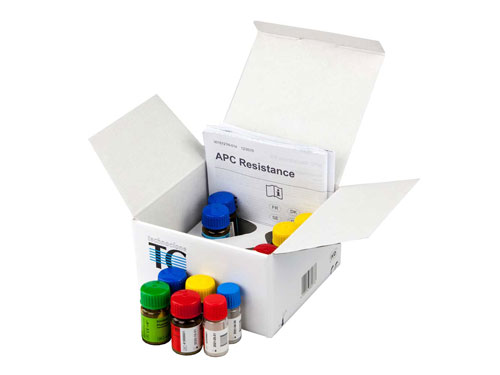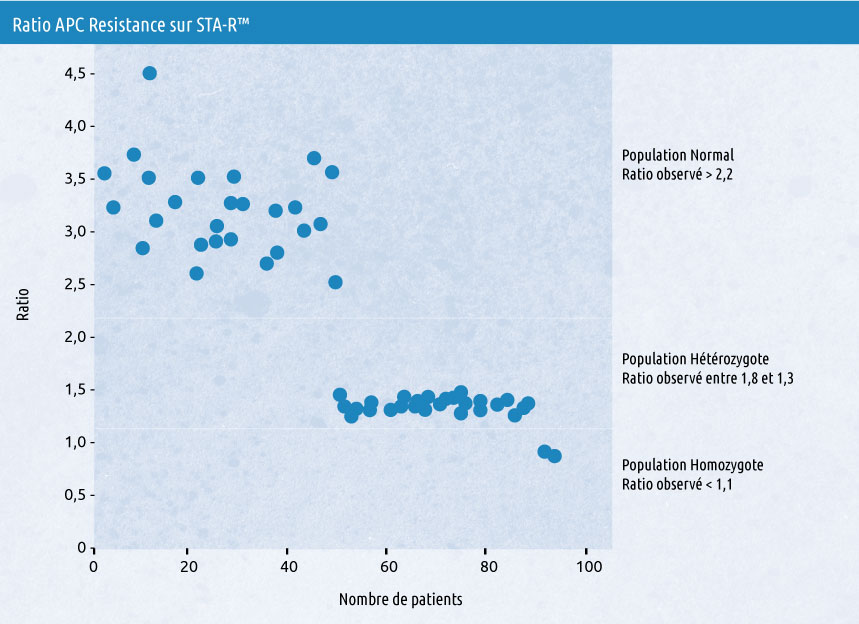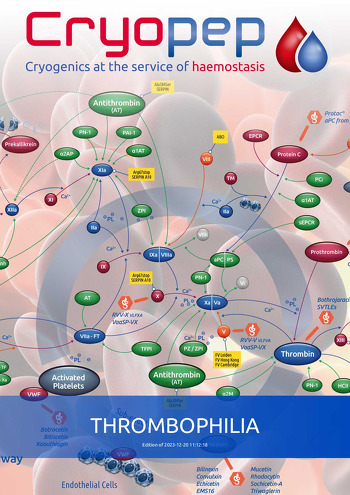HEMOSTASIS COAGULATION ROUTINE THROMBOPHILIA FACTOR V LEIDEN / APCR
APC Resistance Kit









Chronometric assay
Determination of resistance to protein C activated by the coagulant method.
The APC Resistance Kit is a functional plasma coagulation test that differs from other functional tests for resistance to APC by acting specifically at the prothrombinase complex.
It is based on an FV-dependent prothrombin activator isolated from snake venom.
The strength and specificity of the test are improved by eliminating possible disturbances by factors upstream of the coagulation cascade and calcium independence.
Access on the manufacturer's website TECHNOCLONE

| Reference | 4-5344510 |
|---|---|
| Presentation | Kit |
| Number of assays | 3 x 40 |
| Quote |
Price list, safety data sheets and notices are accessible to our registered customers.
| Reference | Presentation | Number of assays | Quote | Product sheet |
|---|---|---|---|---|
| 4-5344510 | Kit | 3 x 40 |
















